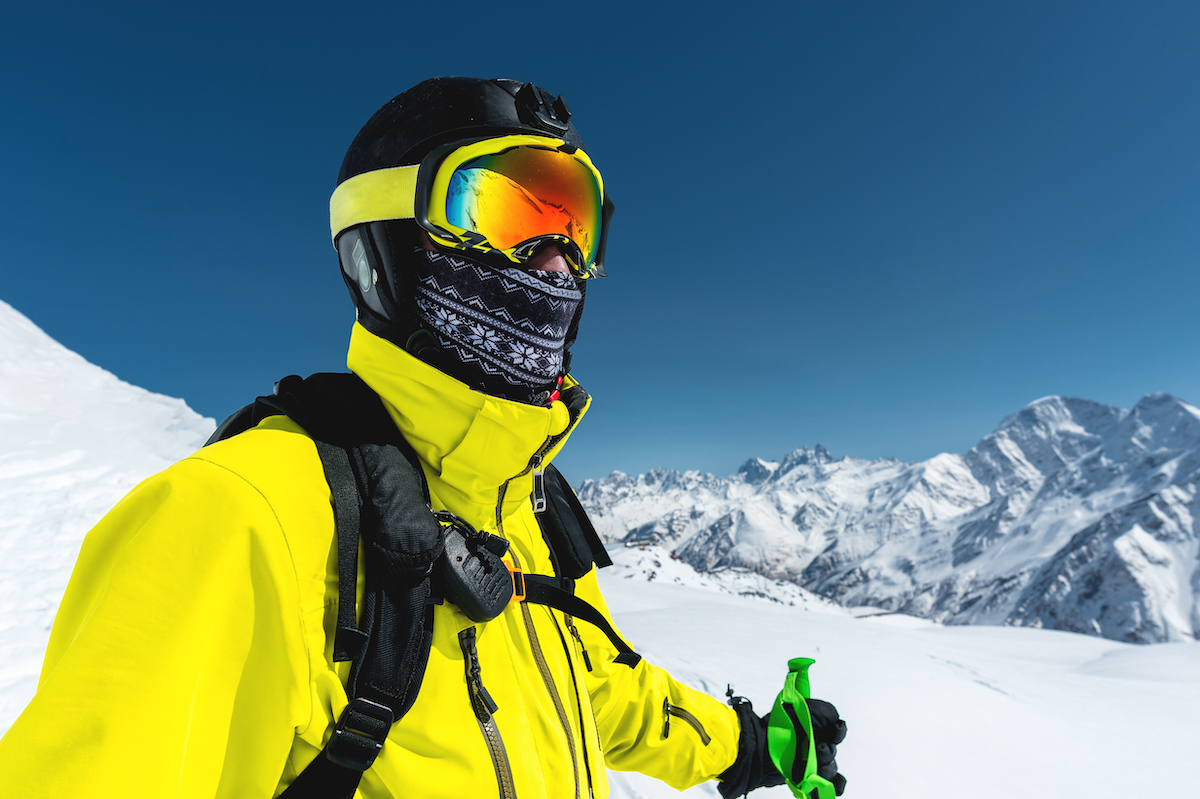Read the original article on Best Life.
1 Scarves
While scarves are surely better than nothing, the CDC warns that they do not qualify as protective gear. The health authority explains on its website that scarves that are “used for warmth are usually made of loosely knit fabrics that are not suitable for use as masks to prevent COVID-19 transmission.” They instead suggest wearing your scarf over a protective mask.
Meanwhile, silk scarves may be a different story. According to a study from the University of Illinois, which has not yet been peer reviewed, a single layer of 100 percent silk is roughly comparable to three layers of cotton, offering moderate protection. Beyond its tightly woven composition, “silk in particular has electrostatic properties that can help trap smaller viral particles,” adds Business Insider. And for more on how to stay safe, check out If You’re Not Doing This, Your Mask Won’t Protect You, Study Says.ae0fcc31ae342fd3a1346ebb1f342fcb
2 Ski masks
The CDC cautions against using ski masks as protection against COVID-19, citing concerns about fabric type. While the organization recommends “masks made with breathable fabric (such as cotton)” and “masks with two or three layers,” ski masks tend to be made of poorly ventilated polyester, and feature only a single layer of fabric.
But what if you actually plan to ski? The rule still stands: use your usual mask for viral protection, and add any additional layers for warmth on top. And for more on masks, check out Dr. Fauci Says This Is When You’ll Be Able to Throw Away Your Face Mask.
3 Balaclavas
With a similar design to ski masks, balaclavas have the added disadvantage of leaving the nose uncovered. While people may stretch the bottom of a balaclava up over the nose, this will be an ill-fitting solution with insufficient materials to protect against COVID. The CDC recommends that if you plan to wear one of these face coverings, you should use it as an additional layer over a more substantial mask. And for more regular COVID news, sign up for our daily newsletter.
4 Face shields
Face shields are the only item on this list considered PPE, but the CDC still warns that they should not be used in lieu of a mask that covers the mouth and nose. “Face shields and goggles are primarily used to protect the eyes of the person wearing it,” explains the CDC, adding that they “have large gaps below and alongside the face, where your respiratory droplets may escape and reach others around you.”
However, the CDC also acknowledges that wearing a mask may not be feasible in every situation for some people. If you must wear a face shield, you should choose one that “wraps around the sides of your face and extends below your chin or a hooded face shield,” the agency explains. And to get the most from your mask, find out why Wearing This Mask Could Be Worse Than No Mask at All, Study Says.
